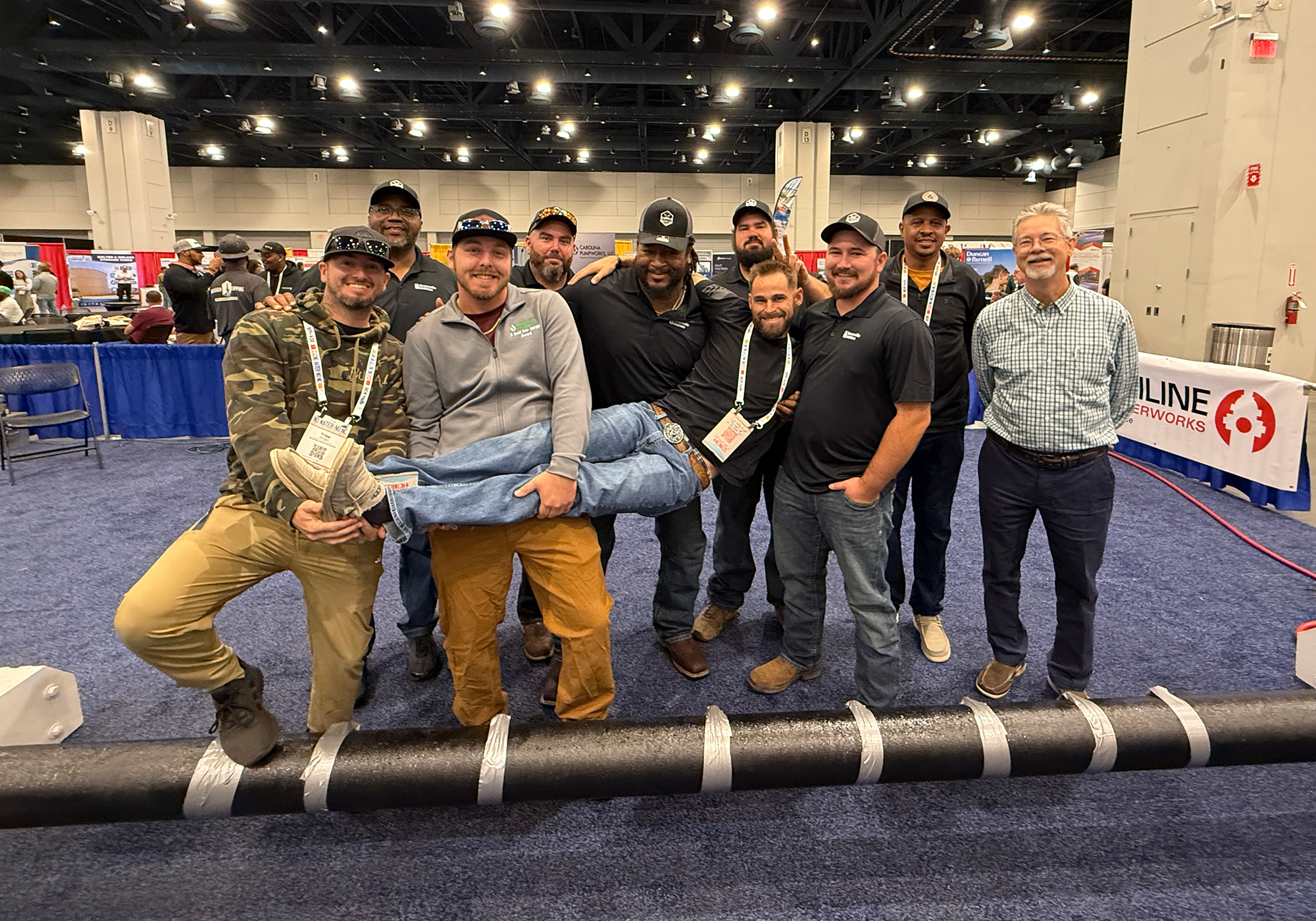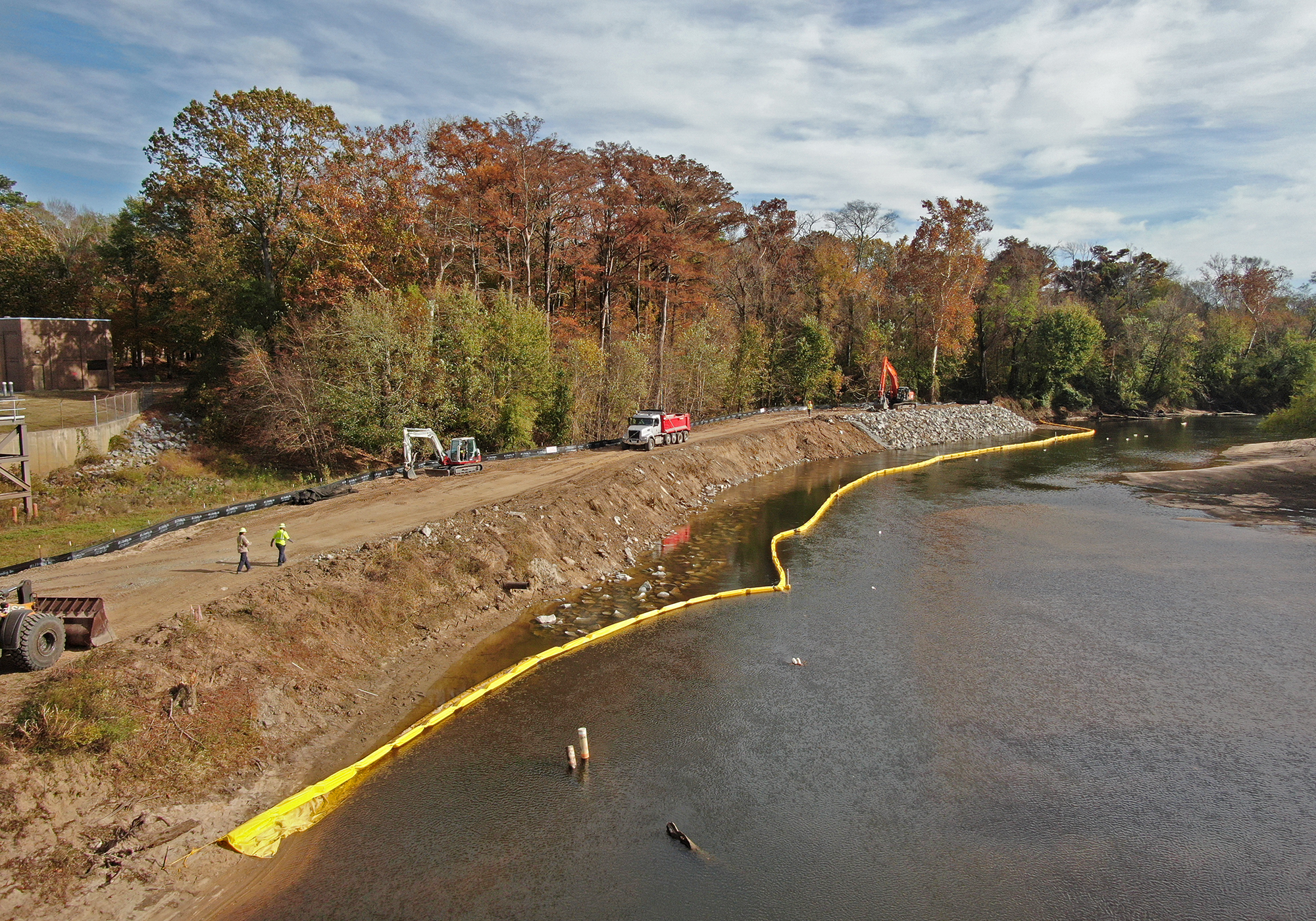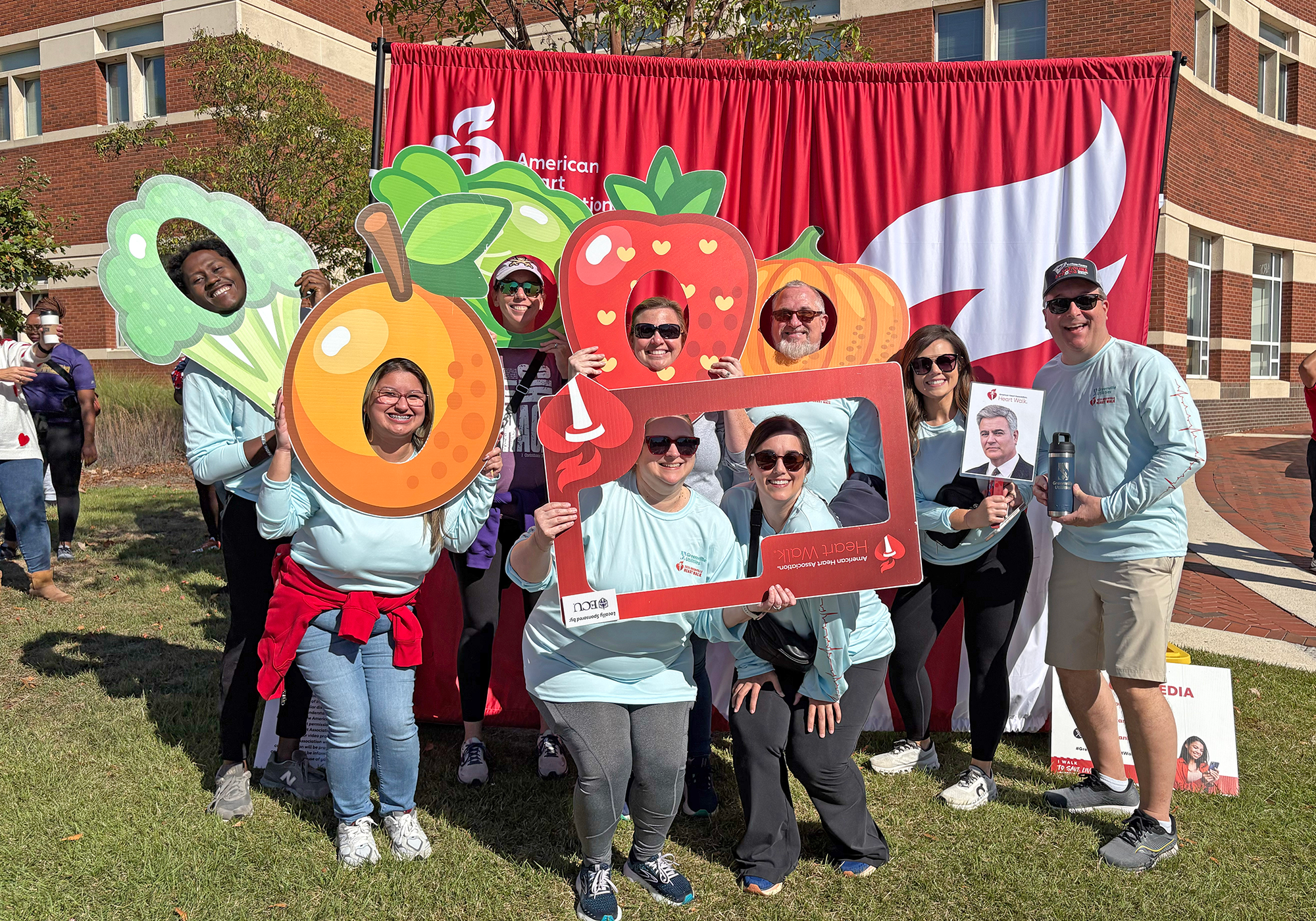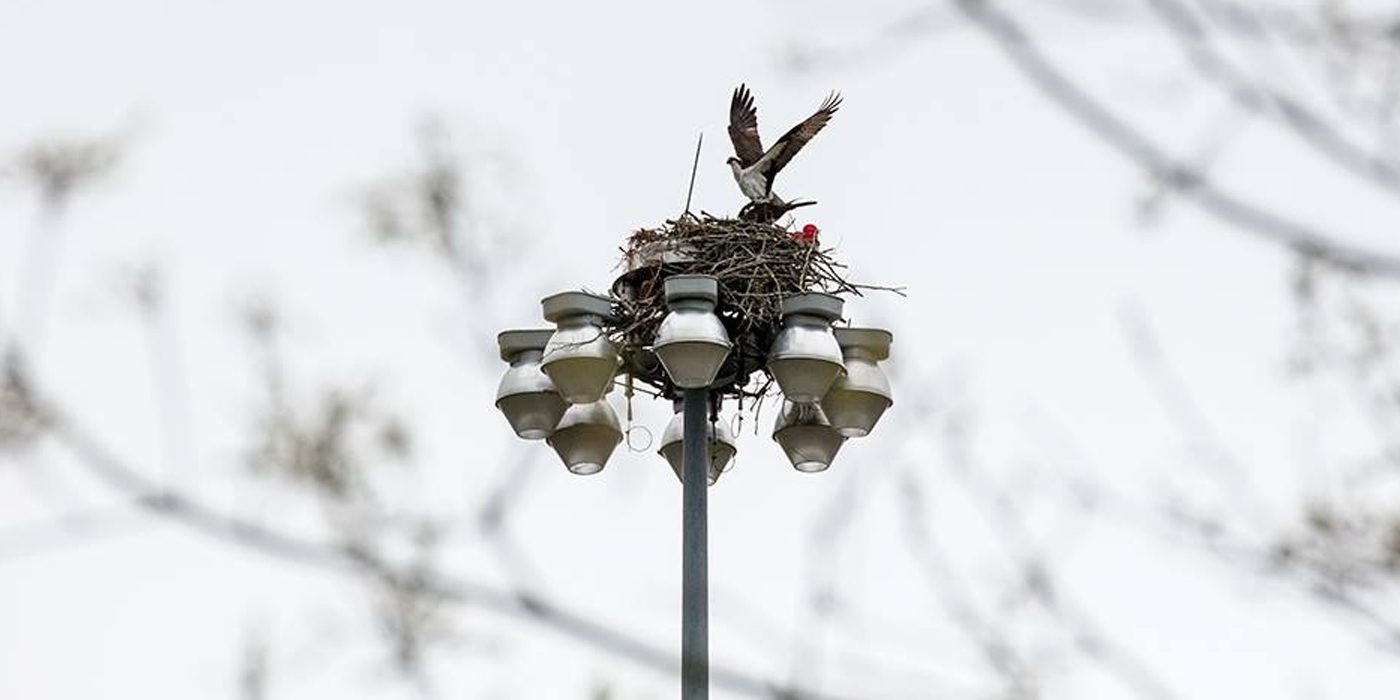
When people seek to photograph bald eagles and ospreys, they typically visit national parks, not their local wastewater treatment plant. For many years, these majestic birds -- along with turtles and schools of fish -- have called the GUC Wastewater Treatment Plant (WWTP) home.
Water is a vital resource not only for humans but also for the wildlife that depend on pristine rivers and streams. And it's our job as a utility to help protect the quality of that water.
In 2005, bald eagles were discovered at the WWTP, and officials from the U.S. Fish and Wildlife Service came out and photographed their nests. This year, employees and visitors got a new surprise.
During the WWTP's Earth Day Open House on April 25th, school children and families from around Pitt County were able to see ospreys carrying branches in their talons as they put the finishing touches on a nest at the top of a light pole on the property. Visitors were also able watch the ospreys as they swooped down to catch fresh fish from the effluent canal where highly-treated water is returned to the Tar River.
"The ospreys have been much easier to watch than the eagles, [since] the eagles have moved farther away from our plant facilities," said Crystal Respess, Lab Technician at the WWTP who has taken a special interest in the resident eagles and ospreys. "This is definitely the first big osprey nest within sight on the plant property."
Nobody knows how many ospreys are at the WWTP, but there's at least one breeding pair and, it's believed, their young. "By the way the osprey couple has been acting lately," said Crystal, "we're fairly certain they have become parents." 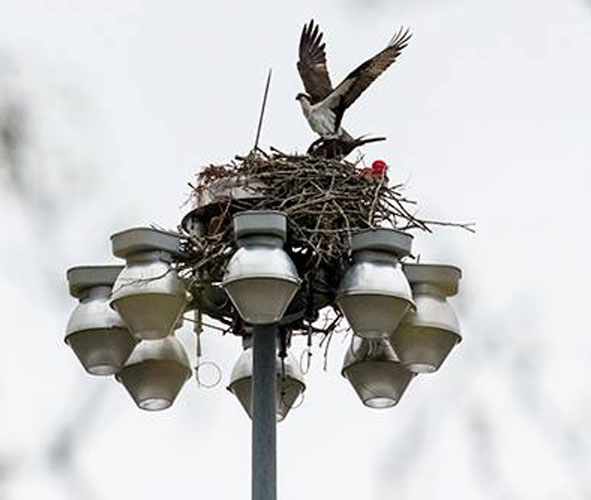
And who would have thought of all the places in Eastern North Carolina, birds like ospreys and eagles would choose their nesting site at the WWTP?
Crystal credited her hard working colleagues for going above and beyond what is required of them when it comes to wastewater treatment. What many don't realize is that the treated water leaving the WWTP is cleaner than the water we bring into the Water Treatment Plant from the Tar River.
The effluent canal is very clear and the water quality is exceptional. So exceptional in fact, that the birds and other wildlife keep coming back.
"We kind of think of it as a nod from the universe," said Crystal. "That's how we felt about the eagles when they first arrived. You just don't get species like ospreys and eagles if the food quality is not good. If there are toxins or problems with the water quality, they're not going to fish in that."
So when will we be certain that the nesting osprey couple have indeed become parents?
"If there are young osprey in the nest, then they should be big enough for us to see them flap their wings in the coming weeks," said Crystal. "We're hopeful and excited at the prospect of witnessing young osprey learn to fish soon."

